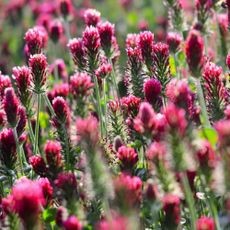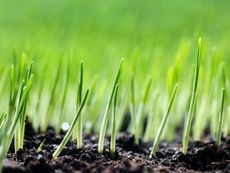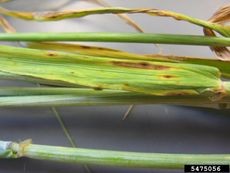No products in the cart.
NEWS
Cultivating Grains: A Guide for Home Gardeners
Growing grains might conjure images of vast agricultural fields stretching to the horizon, but the reality is that many types of grain plants are perfectly suited for cultivation in a home garden, or even in containers indoors. From classic cereals like wheat and barley to nutrient-rich superfoods and vital soil-building cover crops, incorporating grains into your gardening efforts can be a rewarding experience. Different grains have varying needs regarding climate, soil type, and space, offering options for nearly any gardener. This guide explores the possibilities and provides foundational information on cultivating grains in your own space.
Why Grow Grains and Cover Crops in Your Garden?
Beyond the satisfaction of harvesting your own food, growing grains and related crops offers numerous benefits for the home gardener. Cultivating edible grains like chia, fonio, or buckwheat provides fresh, whole ingredients for your kitchen, perfect for use in breakfast cereals, baked goods, salads, and smoothies.
Equally important is the role many “grains” or related grasses and legumes play as cover crops. These are planted not primarily for harvest, but to improve soil health. Cover crops help prevent erosion, suppress weeds, add organic matter, and can even fix atmospheric nitrogen into the soil, reducing the need for synthetic fertilizers. Using techniques like no-till cover cropping further enhances soil structure and biology, creating a more resilient and productive garden ecosystem over time.
Choosing the Right Grains and Plants
The variety of grains and grain-like plants suitable for home gardens is surprisingly large. For direct consumption, consider:
- Chia: Easy to grow in many climates, providing tiny, nutrient-dense seeds.
- Buckwheat: A quick-growing pseudo-cereal that can be harvested for grain or used as a cover crop.
- Fonio: An ancient, gluten-free grain adaptable to various conditions.
- Barley and Oats: While typically field crops, smaller patches can be grown for home use if you have enough space.
For soil improvement through cover cropping, options include:
- Clovers (Red, Crimson, Kura): Excellent nitrogen fixers, improving soil fertility.
- Ryegrass (Annual): Known for dense root systems that improve soil structure and capture excess nutrients.
- Timothy Grass: A cool-season grass useful for soil building.
- Field Brome: Helps control erosion and adds organic matter.
- Teff Grass: A warm-season option for quick soil cover.
- Sudangrass: Fast-growing, great for adding biomass and breaking up compacted soil.
- Wild Millet / Proso Millet: Can serve dual purposes as a cover crop or for grain (often birdseed varieties).
Your choice will depend on your climate, available space, soil conditions, and your primary goal – whether it’s harvesting food, improving soil, or both.
Cultivation Basics
General principles of good gardening apply to grains. Most require a site with adequate sunlight. Soil preparation is key; well-drained soil is essential, and incorporating compost or other organic matter before planting benefits growth, especially for cover crops intended to build soil.
Planting methods vary by grain type, from broadcasting seeds over a prepared bed to planting in rows. Watering needs are moderate, but consistent moisture is important, particularly during germination and grain development stages. Managing weeds is crucial, especially in the early growth phases, as competition for resources can significantly reduce yield or cover crop effectiveness.
Harvesting Your Bounty
Harvesting edible grains typically involves waiting until the seed heads are mature and dry. For example, chia seeds are harvested after the flower petals drop and seed heads dry on the plant. Buckwheat is ready when the seeds begin to mature and turn dark, though harvesting often involves cutting the stalks before all seeds are fully ripe to minimize shattering. The process can be as simple as shaking seeds into a container or cutting stalks to dry further before threshing.
For cover crops, the “harvest” is often integrating the plant material back into the soil. This can be done by tilling it in before it sets seed (acting as “green manure”) or by cutting it down and leaving it on the surface as mulch in a no-till system. The timing depends on the specific cover crop and your planting schedule for the next main crop.
 Vibrant red clover plants thriving in a field, illustrating a beneficial cover crop for soil health.
Vibrant red clover plants thriving in a field, illustrating a beneficial cover crop for soil health.
The Power of Cover Crops
Cover crops are unsung heroes in the garden. Planting them, especially during the off-season like late summer or fall, provides a living mulch that protects the soil surface from erosion and compaction. As they grow, their roots improve soil structure, and legumes like clover add valuable nitrogen. When they are incorporated back into the soil, they decompose, adding organic matter that improves fertility, water retention, and beneficial microbial activity.
Different cover crops offer different benefits. Annual ryegrass is excellent for scavenging leftover nitrogen. Clovers are top nitrogen fixers. Fast-growing sudangrass can outcompete weeds and add significant biomass. Using native plants as cover crops can also support local ecosystems while conditioning the soil. The strategy of selecting and managing cover crops is a powerful tool for building healthier, more productive soil naturally.
 Healthy grass shoots pushing through the soil surface, representing successful growth in a no-till gardening system.
Healthy grass shoots pushing through the soil surface, representing successful growth in a no-till gardening system.
Addressing Challenges: Pests and Diseases
Like any plant, grains and cover crops can face challenges from pests and diseases. Fungal issues like foot rot or leaf blotch can affect crops like barley, and diseases such as Victoria blight can impact oats. While large-scale farming might rely on broad treatments, home gardeners can focus on preventative measures:
- Healthy Soil: Plants grown in rich, balanced soil with good drainage are more resilient to disease.
- Crop Rotation: Avoid planting the same type of grain or susceptible crop in the same spot year after year.
- Appropriate Spacing: Ensure good air circulation to reduce fungal issues.
- Selecting Varieties: Some grain varieties may have natural resistance to common local diseases.
As agricultural specialist Dr. Anya Sharma notes, “Building robust soil health through practices like cover cropping is the first line of defense against many common grain diseases. A healthy soil ecosystem supports healthy plant growth, making them naturally more resistant.” Identifying problems early and taking appropriate cultural control measures are key to managing issues in the home garden setting.
 Barley plant with speckled leaf blotch fungal disease, a common challenge for growers.
Barley plant with speckled leaf blotch fungal disease, a common challenge for growers.
Conclusion
Growing grains and incorporating cover crops into your home garden is an accessible way to diversify your harvest, improve your soil, and connect more deeply with the food you eat. Whether you’re experimenting with ancient grains like fonio, adding nutritional powerhouses like chia, or nurturing your soil with green manures like clover or ryegrass, the process offers valuable lessons and tangible rewards. Starting small with a few pots or a dedicated bed is a great way to begin. Explore the possibilities and enjoy the journey of cultivating your own grains. Finding the right seeds, tools, and soil amendments can significantly impact your success. Biogarden.asia offers a range of products designed to support gardeners in achieving healthy, productive harvests, including those interested in grains and cover crops.
References
- University Extension Guides on Cereal Crop Cultivation
- Home Gardening Manuals for Edible Plants
- Specialized Texts on Cover Cropping and Soil Health
- Research Publications on Grain Diseases and Control



